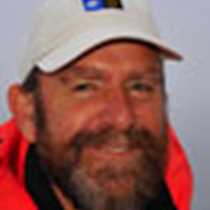Isle of Skye, Scotland
Lord of the Glens slipped out of Loch Nevis in the early hours and set course north up the Sound of Sleat. Luckily for us it was Slight of Sound, as with wind and tide in our favor, we were surfing steadily up the east coast of Skye, headed for Lochalsh. The strong currents and irregular seabed of the Sound create considerable turbulence, perfect for feeding seabirds. We saw rafts of razorbills, gangs of guillemots and milling Manx shearwaters, up to 500 in a flock. As we passed Kylerhea, the channel narrowed and kinked left, accelerating through the constriction. As we ran the rapids we passed swirling gulls and half a dozen seals patrolling the flooding tide for incoming fish. Once into Loch Alsh, the Sound widened out and there was the sleek curve of the new road bridge ahead of us, which we raced under on the surging tide to reveal the high peaks (or Cuillins as they are called) of the Isle of Skye.
Once moored at the Kyle of Lochalsh (from Caol, meaning “straits” in Gaelic) we were opposite Skye, and set off by coach to explore the island. Hugging the north shore, we passed through forestry plantations, by thatched “white houses” (restored examples of the old whitewashed houses of the 19th century crofters), past waterfalls, salmon farms and deeply indented sea-lochs. The sheets of shoreline seaweed glowed ochre and gold against the dark rock.
Our final destination was Portree (which means the King’s Port), the historic capital of Skye, with strong Jacobite associations. Once a flourishing fishing port, it now trawls mostly tourists, but we all enjoyed exploring the small craft shops, a chance to buy last mementos of our “road to the Isles”. But Portree itself was not the purpose of our journey, rather the chance to experience the Skye landscape which is rightly considered among the most spectacular in Europe. Half a dozen of our more intrepid walkers set off with Ian from Sligachan Bridge, trekking in towards the Cuillins.
Despite driving drizzle and mist-shrouded summits, within an hour the rain eased, the cloud was shredded and shafts of sun lit the valley floor, turning the snaking river and scattered pools silver. Our gaze turned upward, to where purple heather and lime green sedges gave way to rose-colored scree slopes: the Red Cuillins are smooth rounded granite domes, contrasting with the jagged black battlements of the Black Cuillins, the ice-carved gabbro peaks of a 60-million year old volcano. We toasted our safe return with shots of local whisky at our roadside rendezvous, the Sligachen Hotel. What a spectacular finale to our journey, from the sheltered barley fields of Inverness, through the loch-lined avenue of the Great Glen, round the shores of the Highlands to the wilderness of the Western Isles, we have seen Scotland in all its glory. The day ended with a spectacular feast back on board, where clan chieftain Brian Copland in full Highland regalia presided over the sacrifice of a young haggis, to the ringing tones of Robbie Burns. It did not die in vain, only suffering briefly while Brian rendered Burns’ verse in his own inimitable German translation, for the benefit of our Swiss, Czech and Hungarian shipmates.
Call +1.800.397.3348 or contact your travel advisor




